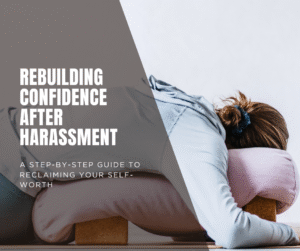Navigating Complaints: A Who’s Who

However you decide to deal with discrimination or harassment, it is important to understand who you can speak to, who they represent and what their roles and responsibilities are.
YOU
- Represent yourself
- Define, speak and hold people accountable to your boundaries
- Document Everything!
- Be prepared for each stage of the process
- Keep track of important dates
ATTORNEY
- Represents you
- Communicates your interests with the company and EEOC
- Negotiates and reviews settlement offers
- Litigates as your legal representative, once you have a “Right to Sue” letter from the EEOC
- Works within current laws
BOSS/SUPERVISOR
- Represents the company’s interests first
- Works to find a resolution to the problem between the harassed and the harasser, within their purview
- May be required to report all incidents to HR
Human Resources
- Represents the company’s interest first
- Manages the complaint information
- Manages the investigation process
- Investigates harassment and discrimination claims directly, or hires an outside firm to conduct the investigation
- Assesses risks of a complaint to the company
- Determines resolution for all parties, but with company’s interests prioritized
- Presents findings, resolution, agreement, and settlement offers
EEOC
- “Neutral” party
- Federal government agency that fields complaints under Title VII of the Civil Rights Act of 1964
- May investigate claims
- May facilitate a settlement between complainant and company through mediation
- Makes a perfunctory finding for the complaint
- Issues complainant a “Right To Sue” letter, without finding
- Issues complainant a “Right To Sue” letter with finding
- Can take direct legal action with a company – only done in 1-3% of all cases


